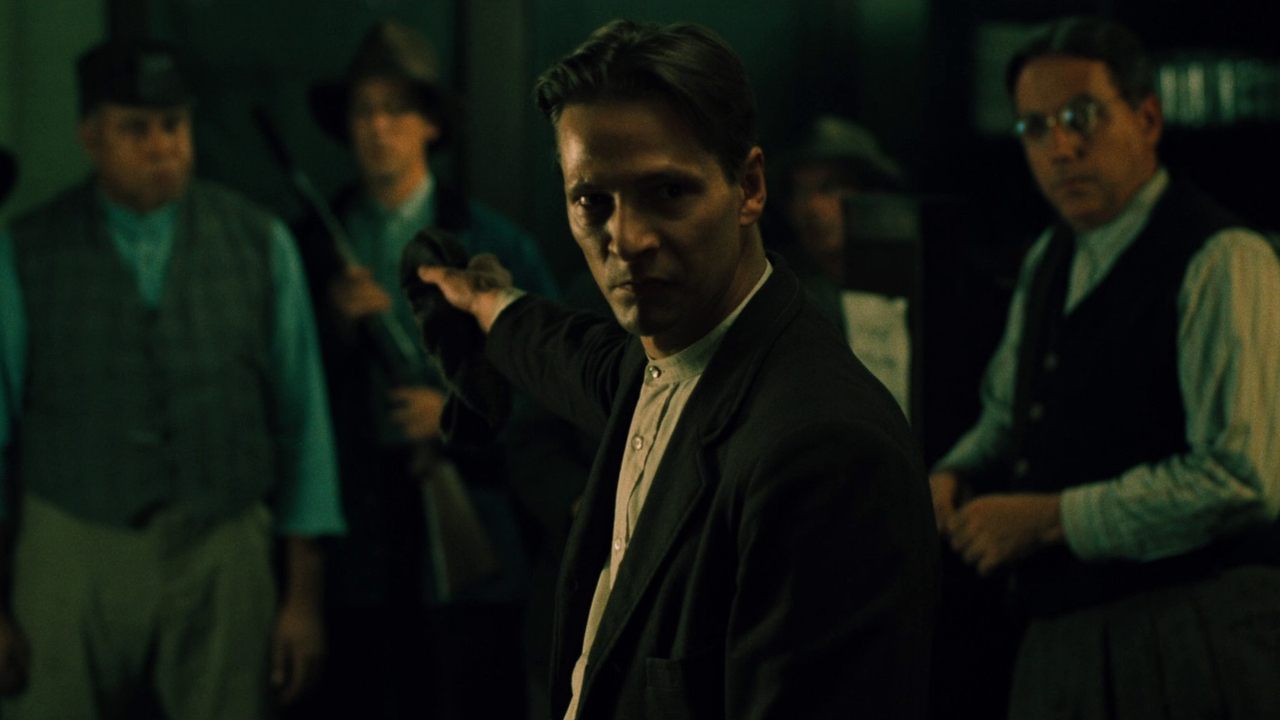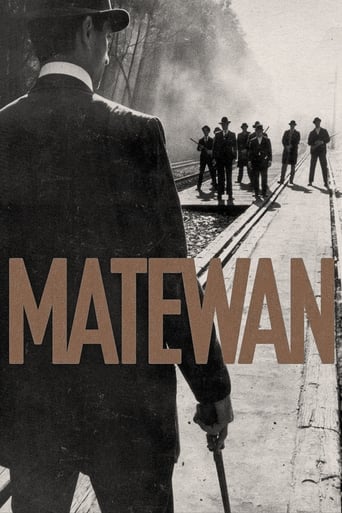

Matewan (1987): Dir: John Sayles / Cast: Chris Cooper, David Strathairn, Mary McDonnell, James Earl Jones, Will Oldham: Effective look into the black slave situation in the 1920's. Not sure what the title represents but the film works despite its limited budget. Set in West Virginia 1920 where coal miners fight for their jobs. Controversy erupts when black slaves are brought in to work the mines. The local Sheriff wishes to keep the peace but union officials threaten to drive people out of their homes. Chris Cooper arrives to arrange a strike but what follows is violence. Mary McDonnell opens her home to him. She has a son, played by Will Oldham and they both make the guest feel at home. James Earl Jones plays a black slave who wishes not to fight but to join up. Well written and expertly directed by John Sayles who previously made Hard Choices and Baby, It's You. Cooper gives a strong debut as someone looking for work yet gets sucked into violent conflict. David Strathairn is strong as the Sheriff who tries for order and reasoning. As these stories often are, it seems typical to conclude with a violent showdown that proves more as a showcase than a purpose. It's budget gives it the same appeal as a TV film, which also isn't good. However, it does have a strong subject regarding race and slavery and the freedom to fight for it. Score: 7 / 10
... View MoreJohn Sayles tackles a union struggle from 1920 in West Virginia where coal miners seeking a better pay and working conditions organize against a company who use race to divide the workers, making it a wedge between black and white workers.This was the era of the company store when the mining company owned the people doing all the back breaking work. The organizers are infiltrated by undercover agents; the hated Pinkerton's were well known for breaking strikes both covertly and overtly. Sayles sympathies clearly lie with the working class and this is an important work by an underrated director.
... View MoreBeing a European I had some difficulty in understanding the occurrences in this film. It tells the true story of the labor conflict of coal miners in Virginia around 1920. They are dissatisfied with the working conditions and go on strike. The company uses the truck-system, and the workers live in company houses. So the company takes with the other hand, what the one has paid out in wages. Right at the start we see the strikers in action while stopping a train and trying to thrash a group of so-called scabs (who apparently were unaware of the prevailing conflict). In addition the strikers employ anarchist methods to intimidate the employer, like sabotage with dynamite sticks. It is not surprising, that the employer has placed a machine gun at the premises. On the other hand the employer himself uses similar methods, and has hired a private security firm in order to intimidate the people. He tries to bribe the mayor and the sheriff. Yes, they still have a real sheriff over there, complete with a badge and belt and pistols on both sides, like an ancient Sam McCloud! Fortunately for the miners, this local establishment remains on their side. When the bandits of the security firm try to evict several families from their company homes, the sheriff maintains that this action is illegal and puts an end to it. However, we as the audience lack the information needed to judge which of the quarreling parties has the supreme law on its side. Luckily we still have the union of miners, and they send an organizer Joe Kenehan into the area. This man is as best as you can get them. He has a social hearth and strongly opposes violence, firstly because it is against his principles, and secondly because the workers will eventually lose an armed battle. The union brings some material support to the strikers, like camping tents, which transform the area into a kind of refugee camp. During the night the company bandits have a raid and fire at random. The climax is reached when two young men try to steal coal, and one of them gets his throat cut by the security bandits. The miners revolt, and a gun battle ensues in which the mining company is temporarily defeated. However, both sides suffer severe losses, among which is the fatally wounded unarmed organizer. The film suggests, that this was the start of a long range of armed collisions between employers and workers. In Europe we have never seen similar scenes, and in my eyes the film looks more like a western than like a film about unionism. Perhaps it has some similarities with the French film Germinal, which however narrates a story about a labor conflict around 1870 - so half a century before! And even in that tragic event the national guard was immediately present as the legitimate defender of the law. I guess the differences reflect the weak position of the authorities in the American Federation. There was hardly any authority or legitimate law in the newly conquered land, and the people had to take matters into their own hands. Of course the most powerful party will always win, but in American states like Virginia there was no strong local or regional authority, that could play the role of mediator in order to mitigate excesses. The narrative suggests that the film director Sayles sympathizes with the miners, but essentially the whole mess turns out to be a display of stupidity. But perhaps this is European prejudice. Apart from this drawback, the acting is convincing, the dialogs are realistic, and the film shots aptly convey the local conditions.
... View MoreIn the movie Matewan about a coal mining strike of the 1920's, the steam engine shown was actually built in the 1940's and was shown traveling along welded rail which was not introduced until the 1970's. Despite this technical inaccuracy it is still an excellent film, well acted and written, and worth the viewers' time.I realize that at the time the movie was made the active rail lines in West Virginia were welded and not jointed, so perhaps to keep the overall location accurate,( Matewan is in Kentucky, right across the ridge from West Virginia), they had to use jointed rail.The engine in the movie was a more modern steam engine but very few working engines exist from the 1920's. And yes, I am a trainspotter.
... View More